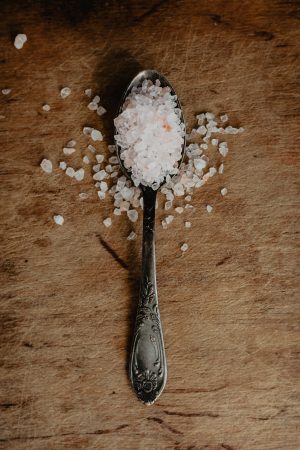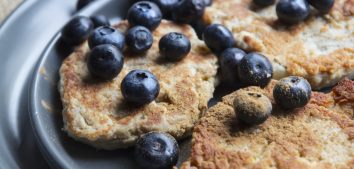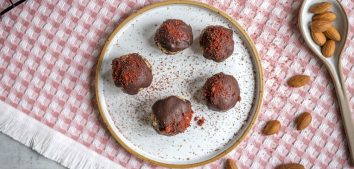
Top Five Compounds in Food You Should Avoid!
Store shelves are full of various types of products and their variants. In the frenzy of everyday duties and lack of time, you often get the first thing from the shelf that catches your attention. However, the other side of the packaging – the less attractive one, is extremely important. Do you try to read the labels but don’t understand what exactly the manufacturer put on them? The list of ingredients is long, but try to avoid these five compounds in particular.
1. White gold, but is it really? Salt
Salt is one of the two most often used food additives. Above all, it makes the dishes flavorful, but is also a great preservative. However, due to the widespread use of salt, it is very easy to have too much of it. In our daily diet, we should use no more than one level teaspoon of salt, or 5 g. However, manufacturers often use sodium instead of salt. We should multiply the sodium content by 2.5. Your diet should contain no more than 1500 mg per day of this compound. On the label you will find sodium abbreviated as Na. Where to look for it? Smoked salmon, corn flakes, stick sausages or salted sticks contain over 1000 mg of sodium in 100g of the product! In addition, Na can be found in high and medium mineralized waters, which are rich in calcium, magnesium and potassium. Remember not to overdo it because high salt and sodium consumption can cause high blood pressure or atherosclerosis.
The products you should pay particular attention to are bread, ripened and processed cheese, meat, cold cuts, canned food and instant dishes. Visiting fast food restaurants on a regular basis where the dishes are rich in sodium can worsen both your body shape and your health. We all love burgers, but you can make them yourself at home. Use a crispy fresh bakery roll, a beetroot cutlet and lots of vegetables. You can eat this fast food even every day! ?

2. Not only sugar
Sugar is the second most used substance in food. Even if you don’t sweeten coffee and tea and avoid sweets, you can still consume up to several teaspoons of sugar a day. How is this possible? Sugar is added to bread, meat, yoghurt, ketchup, mustard and cereals. I’m sure bread comes a surprise ? However, sugar can be found in bread in different forms: caramel (to make the bread appear brown and healthier), barley or wheat malt (to make the loaf bigger and more golden). Molasses, or beet sugar, gives bread its caramel flavor and dark coffee color. You should also pay attention to high fructose corn syrup, which is a cheaper equivalent of sugar. It owes its popularity to the liquid form, which is more convenient in the production process.
Another equivalent of sugar are sweeteners, which, if consumed in excess, can cause diarrhea. However, not all sweetener are created equal. There are natural and artificial sweeteners. Natural are, among others, stevia and birch sugar, commonly known as xylitol. When it comes to synthetic sweeteners, one of the most popular representatives of this group is aspartame in combination with acesulfame K, which together give an even stronger sensation of sweet taste. Moreover, artificial sweeteners are a good option for diabetics. Remember that these are substances made from scratch in laboratories. They have nothing to do with nature on which I focus so much.
Let’s take a look at xylitol. It provides 40% fewer calories than white sugar, does not raise blood sugar levels and does not affect insulin secretion. It’s a great, natural alternative to aspartame! However, it is still worth getting rid of the habit of sweetening your food, as it can promote obesity. If you add sugar or a natural sweetener, the amount of calories increases and the subjective feeling of sweetness will gradually decrease. As you know very well, something may be too sweet for one person, and the same amount will not be enough for someone else.

3. Insect additive
Cochineal (E120) is a red dye obtained from worms that feed on cacti in North America. Insects and aphids are dried and ground, and then added e.g. to strawberry yoghurt, jelly or ice cream. This is a much cheaper method than adding red fruit juice. Cochineal contains salicylates which asthmatics should watch out for. Although it is obtained from insects, cochineal is safe. Unfortunately, contaminants often get into it, which can trigger an allergic reaction, including hay fever.
4. E621, or monosodium glutamate
It is a flavor enhancer that is added to meat, stock cubes or ready-made spice mixtures. It gives a characteristic meaty taste and therefore the dish seems to be more fatty. In small amounts, E621 is safe, but it is very easy to overdose it by using a wider range of products containing it. It is worth mentioning that its excess negatively affects the nervous and endocrine systems. Moreover, it can accumulate in the body causing vision problems.
5. Mold holds no fear for it – benzoic acid
Benzoic acid (E210) is a preservative that protects the product against the growth of mold and yeast. It occurs naturally in some berries. However, when added to foods, it can leave a strange aftertaste in the mouth and make products look suspiciously cloudy. In higher doses it may cause poisoning symptoms such as vomiting, headaches, allergies, irritation of the throat and stomach.
Read labels carefully to avoid being fooled by producers. Remember that the shorter the composition, the less processed the food. Try to find a few everyday products with good ingredients and stick to them when doing quick shopping. Remember that most food additives are safe, but due to their common occurrence you may eat them in excess. This will have a negative impact on your health and well-being. Did you find my article interesting? If so, I invite you to check the labels of the products you most often use ?
Bibliography:
- Heinemann JA. Food and chemical toxicology. Food Chem Toxicol. 2013.
- Kłosiewicz-Latoszek L, Cybulska B, Cukier a ryzyko otyłości, cukrzycy i chorób sercowo-naczyniowych. Probl Hig i Epidemiol. 2011.
- Sikorski ZE. Chemia żywności. Pr Zbior t1,WNT, Warszawa. 2007.
- Zdrojewicz Z. SWMW. The role of salt in the man organism and phenomenon of sodium sensitivity and sodium resistance. Med Rodz. 2016.










Comments No Comments
Join the discussion…